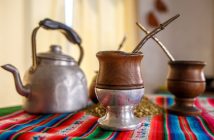In some aspects, the world of beer and wine couldn’t be more different. The raw ingredients, price tag and cultural standing of the two products are worlds apart. Taking a closer look however, things aren’t as different as they seem. As the popularity of beer continues to rise so too are the traditional techniques used to make it. Barrel ageing and blending; terminology usually associated with wine production are now being increasingly adopted by brewers to create unique and alternative brews. As the boundaries between beer and wine become increasingly blurred nowhere is this more evident than with the introduction of Champagne-style beer.
Complex, indulgent and widely considered the Champagnes of beer, these brews offer a unique and magnificent drinking experience.
History
The concept of Champagne-style beer was born at breweries in Buggenhout, East Flanders in 2001 although which one is a good question. As the story goes, Michael Jackson (the esteemed beer writer) and an American friend visited the Malheur Brewery and met with owner Manu De Landtsheer. Over a beer, Jackson casually asked Manu what his ultimate dream in brewing might be to which Manu replied “I want to make a beer like they make Champagne in France”. “Why don’t you?” Jackson replied. “I have no customers” was Manu’s commercially aware response at which point Jacksons American friend piped up and said “I’ll take your first container”. And so it began.
The Process
The process of making a ‘Champagne-style’ beer starts off with the conventional brewing process. After brewing, the beer is transferred in to Champagne style bottles and a triage (mixture of sugar and yeast) is added to allow a secondary fermentation in the bottle. This stage can take between 3-12 months after which the beer is ready for the Champagne treatment.
The bottles are laid down horizontally ready to be riddled where, over a period of 14 days, they are turned slightly each day and slowly inverted to collect the yeast sediment in the neck of the bottle. Once the bottles are vertical and the yeast sediment is collected in the neck of the bottle they are taken to be disgorged. Here the yeast sediment is frozen to form a solid plug in the neck of the bottle. When the bottle is opened the pressure inside forces the yeast plug out leaving a clear liquid behind. The bottles are then corked, caged and dressed ready for sale. The whole process is known as the methode champenoise or the ‘traditional method’.
The use of the term Champagne is highly restricted through the appellation d’origine controlee which guarantees the place of origin for grapes used in the sparkling wines. Whilst the beer cannot be labelled ‘Champagne Beer’ much of the terminology used in sparkling wines can be found on the labels.
Notable examples
With the high costs associated and difficulty of production there are only a handful of breweries in the world attempting this style of beer. Here are three of the best examples of the style:
Malheur – Biere Brut
Considered the original Champagne–style beer, this 11.0% ABV Blonde ale pours a fantastic straw-like colour with a large white head. The aroma is of citrus, lemon and floral notes whilst the palate is smooth, fruity and with a subtle bitterness. (£17.60 from Beer Merchants)
Bosteel – Deus
This 11% ABV Belgian Tripel is aged in underground caves before being riddled and disgorged. The beer pours a light golden colour with notes of apples, pears and hop spices in the aroma. The smooth and light body make for easy drinking given the ABV with a slight fruit sweetness in the finish. (£17.95 from Beer Merchants)
Savour – Sparkling Beer Brut
Produced in conjunction with Bolney Wine Estates, the purpose of this beer was to create a British version of the Champagne-style beers found in Belgium. This 10.5% ABV beer pours a deep golden colour with a soft white head. The aroma is of honey, spices and foal notes with a smooth rich body and highly effervescent finish. (£18 from Beer Hawk)





1 Comment
Hi,
“The Champagne of beers”. Such may present problems for beer drinkers. The gastronomy of drinking beer is different to that of drinking wine. One drinks beer by the gasp, wine by the sip.